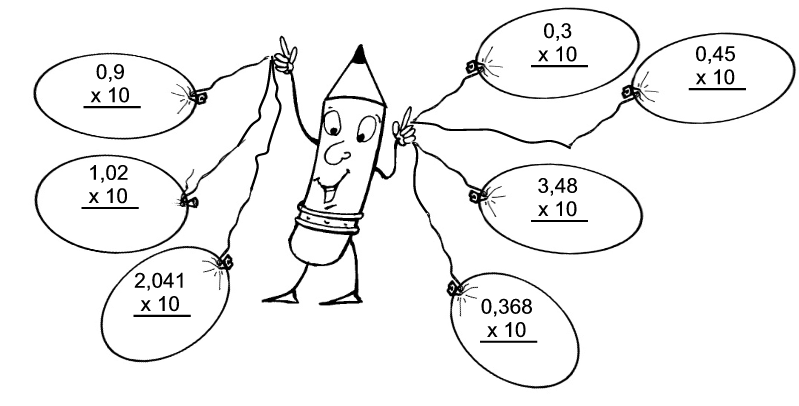| << Chapter < Page | Chapter >> Page > |
INTRODUCTION
The learning programme for grade six consists of five modules:
1. Number concept, Addition and Subtraction
2. Multiplication and Division
3. Fractions and Decimal fractions
4. Measurement and Time
5. Geometry; Data handling and Probability
COMMON AND DECIMAL FRACTIONS (LO 1; 2 AND 5)
LEARNING UNIT 1 FOCUSES ON COMMON FRACTIONS
** Activity 19 is a task for the portfolio. The assignment is fairly simple, but learners should complete it neatly and accurately. They must be informed in advance of how the educator will be assessing the work.
2.2 shifted one position to the right
3.
3.1 30
90
45
348
102
36,8
204,1
3.2 shifted two positions to the right
3.3 shifted two positions to the left
4.1
| NUMBER | 0,3 | 0,9 | 0,45 | 3,48 | 0,368 | 2,041 |
| x 1 000 | 300 | 900 | 450 | 3 480 | 368 | 2 041 |
1. Let's see what happens when we multiply decimal fractions by 10 and multiples of 10. Work with a partner. Find the answers to the following with the help of a pocket calculator:

2. Answer the following questions::
2.1 What has happened in the case of the tenths digit?
2.2 What has happened in the case of the decimal symbol (comma)?
3.
3.1 Complete the flow chart with the help of a pocket calculator:

4.
| NUMBER | 0,3 | 0,9 | 0,45 | 3,48 | 0,368 | 2,041 |
| x 1 000 |
When we multiply a decimal fraction by 10, the decimal comma is shifted one position to the right.
When we multiply a decimal fraction by 100, the decimal comma is shifted two positions to the right.
When we multiply a decimal fraction by 1 000, the decimal comma moves three positions to the right.
Learning Outcome 2: The learner will be able to recognise, describe and represent patterns and relationships, as well as to solve problems using algebraic language and skills.
Assessment Standard 2.2: We know this when the learner describes observed relationships or rules in own words;
Assessment Standard 2.3: We know this when the learner determines output values for given input values, or input values for given output values, using:
2.3.1 verbal descriptions;

Notification Switch
Would you like to follow the 'Mathematics grade 6' conversation and receive update notifications?